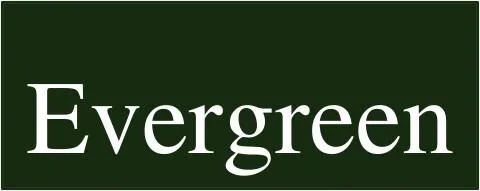WHAT FORE MEMBERS ARE SAYING
" What is currently considered as constituting an alternative or a hedge fund? What do these entities serve as alternatives to, and against what risks do they act as hedges? "
MEMBER LINK
Community | Education | Legacy
FAMILY OFFICE REAL ESTATE INSTITUTE BLOG
The Latest on Family Offices and Real Estate, At the Family Office Real Estate Institute, our commitment to advancing knowledge and expertise in real estate management within family offices extends beyond the classroom.
MEMBER LINK
Community | Education | Legacy

What are My 1031 Exchange Options?
Investors can utilize the services of a qualified intermediary to handle the transaction and ensure that the exchange meets the strict requirements of a like-kind exchange. Through the 1031 exchange, investors can also diversify their portfolios by investing in different types of the replacement property, such as fractional ownership in multiple properties or exchanging into a more diverse mix of the assets of real estate.
To qualify for a 1031 exchange, the replacement property must be of the same or greater value than the exchange property, and the transaction must be completed within a certain timeframe. If done correctly, investors can defer paying capital gains taxes and reinvest the profits into the replacement property obtained through the exchange.
It's essential to note that a 1031 exchange isn't the only capital gains tax-deferral strategy available to investors. Alternatives such as deferred sales trusts can also be utilized to defer tax liability. However, these strategies often have more complicated requirements and regulations than a 1031 exchange.
In this article, we'll explore the various options available through a 1031 exchange, including real and personal property, and the requirements and benefits of each.
What is 1031 Exchange?
Real estate investors have a secret weapon in their arsenal - the 1031 exchange. This powerful tax strategy allows investors to defer capital taxes gain when they sell an investment property and reinvest the proceeds into the like-kind property. By deferring these taxes, investors can keep more of their profits and use them to acquire new properties, thereby increasing their portfolio and building wealth.
When utilizing the 1031 exchange, real estate owners must identify a replacement property within 45 days of selling their relinquished property and close the transaction within 180 days. This timeline ensures that the exchange meets the requirements of a like-kind exchange and allows investors to deferring capital gains tax paying capital gains taxes until a future sale.
It's important to note that the 1031 exchange is not the only tax-deferral strategy available to investment real estate by investors. Alternatives such as a deferred sales trust can also be utilized to defer tax liability. However, the 1031 exchange remains one of the most popular options for investors due to its simplicity and flexibility.
The 1031 exchange is a powerful tool to help real estate investors defer capital taxes gains increase their portfolios, and diversify their assets. By working with a qualified intermediary and following the strict guidelines of a like-kind exchange, investors can maximize their returns and minimize their tax liability. For those looking to build wealth through real estate, the 1031 exchange is a valuable strategy to consider.
How many types of 1031 Exchange Replacement Properties?
1. Delaware Statutory Trusts (DSTs)
Delaware Statutory Trusts (DSTs) are an investment vehicle that allows investors to purchase an interest in a large commercial property without actually owning the property outright. DSTs are used as 1031 exchange replacement properties because they offer diversification and passive income potential.
They are managed by a trustee, which can serve as the qualified intermediary in the exchange process. DSTs are often used for larger, more expensive properties that would be difficult for a single investor to purchase and manage independently.
2. Fee Simple Property
Fee Simple Property refers to real estate that is owned outright, without any liens or encumbrances. In a 1031 exchange, fee simple property is a popular choice as a replacement property because it offers the property owner complete control over the property. It is also relatively easy to find and purchase fee-simple properties that are similar in value and type to the relinquished property.
3. Net Lease Property
Net Lease Property is a type of commercial property where the tenant is responsible for paying for property taxes, insurance, maintenance, and rent. Net lease properties are often used as 1031 exchange replacement properties because they offer a stable income stream and lower management requirements for the property owner. They are also attractive to tenants because they offer more control over the property and the ability to customize the space to fit their needs.
4. Tenants-in-Common (TIC) Property
Tenants-in-Common (TIC) Property is a type of real estate ownership where two or more individuals own a fractional interest in a property. TICs are often used as 1031 exchange replacement properties because they allow investors to own a portion of a property without being responsible for managing it.
This type of ownership also allows for easier diversification of a real estate portfolio, as investors can purchase fractional interests in multiple properties. However, TICs can be complex to manage and may require a qualified intermediary to handle the exchange process.
What is the Like-Kind Property Requirement
Like-kind property refers to two or more properties that are of the same nature, character, or class. It is a term used by the Internal Revenue Service (IRS) in the United States to describe a requirement for a tax-deferred exchange of investment property or real property. In essence, the like-kind property requirement is a provision in the tax code that allows real estate owners to defer capital gains tax by exchanging one property for another.
The like-kind property requirement is a provision under Section 1031 exchange of the Internal Revenue Code, which allows taxpayers to pay taxes and to defer taxation of the capital gains by exchanging investment property or business property for another property of greater or equal value.
The exchange must be structured as a 1031 exchange, also known as a like-kind exchange, requiring the properties involved to be like-kind. The like-kind property requirement is designed to encourage investment and facilitate the exchange of properties by providing a tax-deferral incentive.
Examples of like-kind property include real property, such as rental properties, commercial buildings, and undeveloped land. Personal property, such as vehicles, artwork, and equipment, are not like-kind to property that looks like real and, therefore, cannot be used in a 1031 exchange.
Replacement property in a 1031 exchange must be of equal or greater value than the relinquished property and be held for investment or use in a trade or business. Examples of replacement property in a 1031 exchange include triple net leased property, Delaware statutory trusts, and primary residences used for investment purposes.
To ensure compliance with the like-kind property requirement, a qualified intermediary is often used to facilitate the exchange and ensure that all IRS rules and regulations are followed.
Types of 1031 Exchange Options
1. Simultaneous Exchange
A simultaneous exchange, also known as a concurrent exchange, is the original type of 1031 exchange where two parties exchange properties simultaneously. In this exchange option, the sale of the relinquished property and the purchase of the replacement property occur simultaneously.
This type of 1031 exchange is ideal for investors who want to diversify their portfolio by exchanging one type of property for another of the same or greater value. For example, an investor who wants to exchange a rental property for a vacation home can do so through a simultaneous exchange. This exchange option allows the investor to defer capital gains tax and depreciation recapture by exchanging one property for another.
2. Delayed Exchange:
A delayed exchange, or a Starker exchange, is the most common type of 1031 exchange. In a delayed exchange, the investor sells their relinquished property first and then uses the sale proceeds to acquire a new property within 180 days. This exchange option is ideal for investors who need more time to find a replacement property that meets their needs.
Delayed exchanges allow investors to defer capital tax gains and depreciation recapture by investing the sale proceeds into a new property. Additionally, investors can use fractional ownership or tenants in common structures to acquire partial ownership of a larger property.
3. Reverse Exchange
A reverse exchange is an option for acquiring the replacement property before the relinquished property is sold. In this exchange option, the investor acquires the new property first through an exchange accommodation titleholder (EAT) and then exchanges it for their existing property.
This exchange option is ideal for investors who want to acquire a specific property before selling it to another buyer. Reverse exchanges can be more complex than other exchange options and require careful planning to minimize the tax consequences.
4. Improvement Exchange
An improvement exchange, or a construction exchange, is an option where the investor uses some of the exchange proceeds to improve the replacement property. In this exchange option, the investor can have property exchange option for a property of equal or greater value and then use the exchange proceeds to improve the new property.
For example, an investor can exchange a rental property for a commercial building and use the exchange proceeds to renovate the building. This exchange option is ideal for investors who want to acquire a property that needs improvement or upgrade. The exchange improvement allows investors to defer the tax liability on the capital gain portion of the sale proceeds and use the remainder to acquire and improve the replacement property.
Conclusion
For investors looking to defer capital gains tax on investment property, a 1031 exchange can be a valuable tool. With a qualified intermediary, investors can sell their current real estate assets and reinvest in a replacement property of the same or greater value, without incurring immediate tax liabilities.
The 1031 exchange offers a range of options for investors, including fractional ownership, diversification of their diversified portfolio, and the opportunity to transition their primary residence into a rental property. By exploring these options, investors can take advantage of the tax benefits of a 1031 exchange while also maximizing the potential return on their real estate investments.
The Family Office Real Estate Institute (“FORE”) or )the “FORE Institute”) is not affiliated in any way with the University of Denver. Nor are any FORE Institute programs or classes affiliated with the University of Denver. The FORE Institute only uses it facilities for its classes, programs, and events. The University of Denver are the various schools within the University do not sponsor or endorse the FORE Institute, any of its information, products, classes, events, or comments. The FORE Institute declares no affiliation, sponsorship, or partnership with the University of Denver. The FORE Institute stands independently as a for-profit business.
© 2025 Family Office Real Estate Institute







